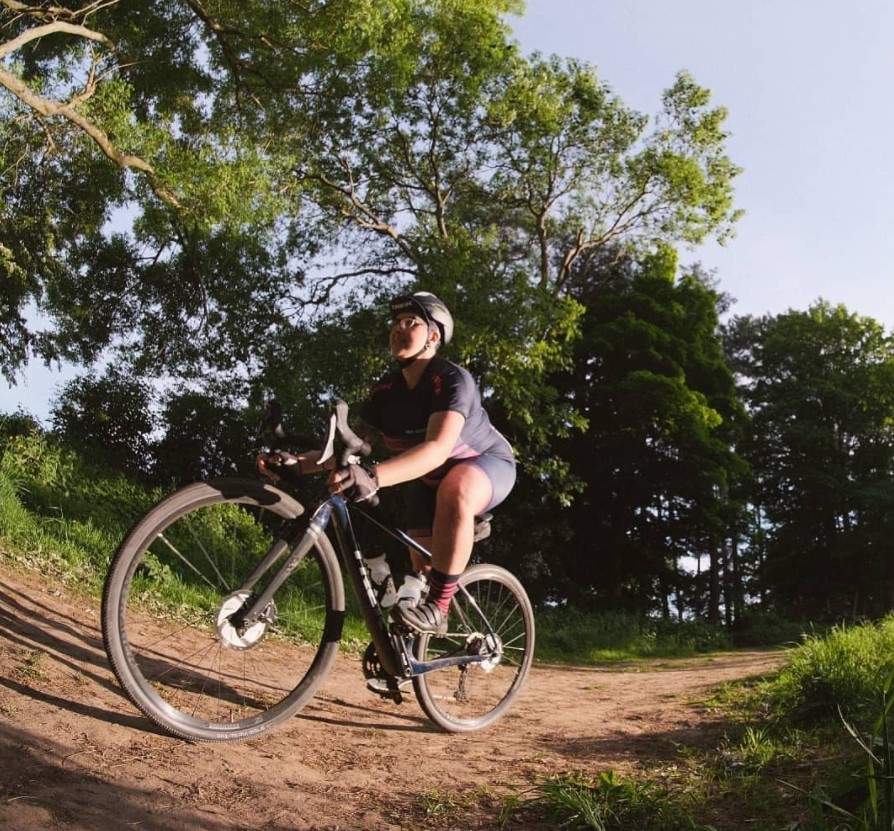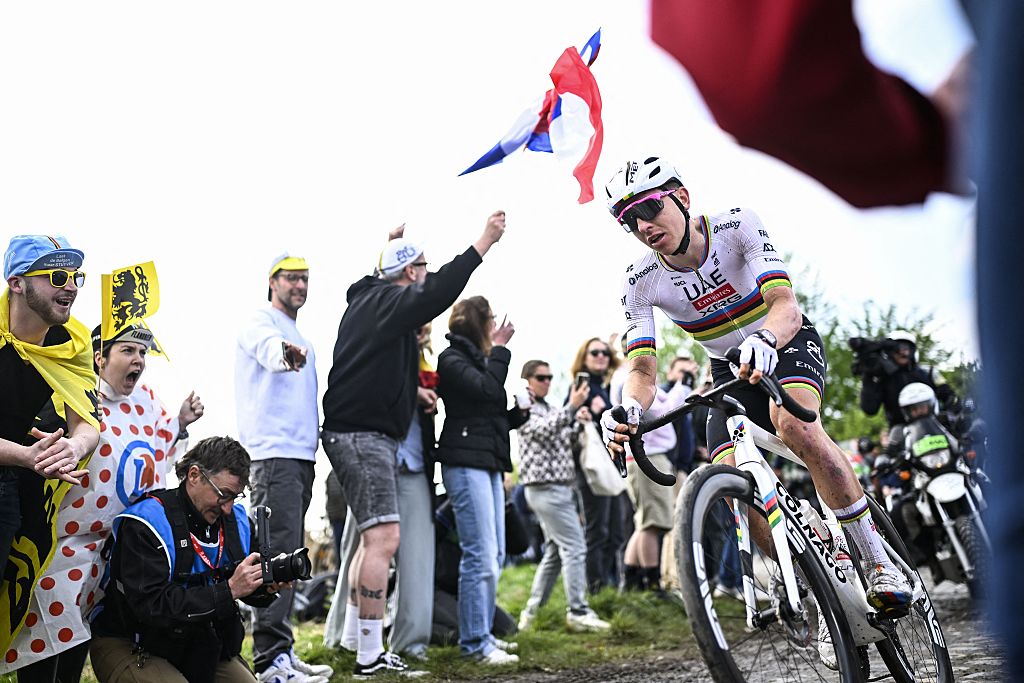Cycling on your period: Everything you need to know
Understanding the menstrual cycle can help you work with your body instead of against it, making cycling on your period a breeze
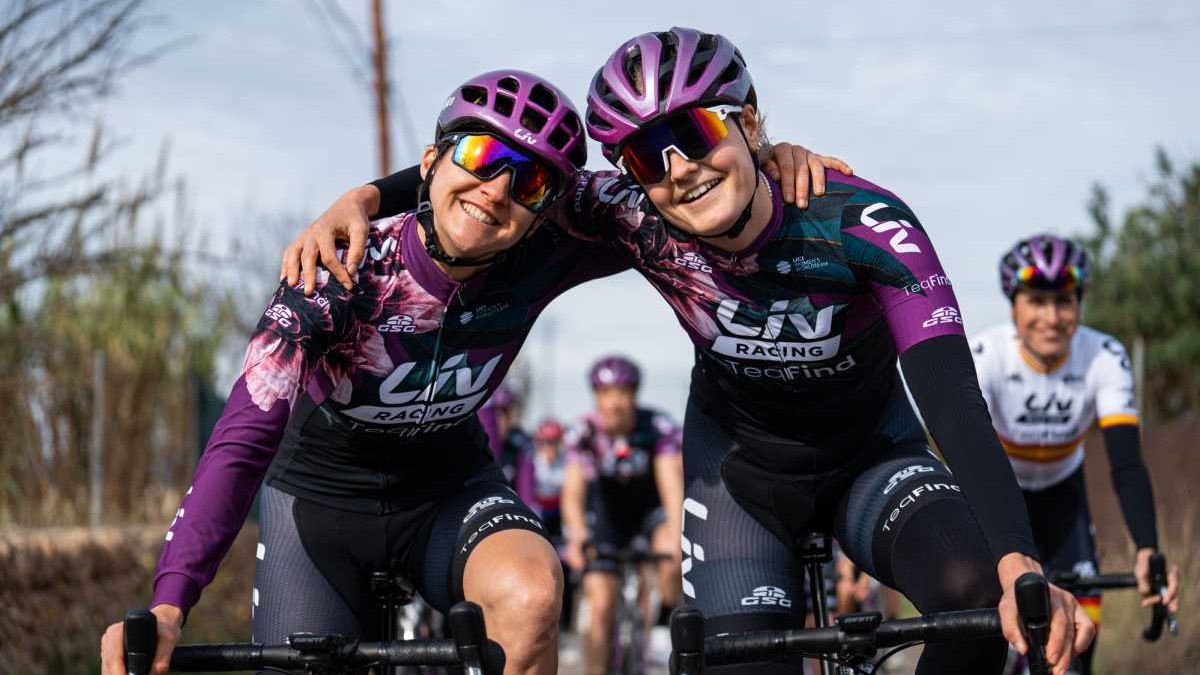
Cycling on your period doesn't have to be arduous. In fact, while it's perfectly okay to rest up away from the bike during that time of the month, there are plenty of reasons you should keep going if you want to. Ultimately it comes down to listening to your body, but really understanding how the menstrual cycle works — and how hormonal changes can impact you throughout the month — makes it possible to plan ahead and know exactly how to train around your period.
Everybody is different. Some people menstruate like clockwork, while others' cycles are unpredictable. Some experience excruciating cramps and prefer to avoid the bike for a week, while for others it's just another day on the bike. Dealing with periods on the bike is among the many common challenges for women who are new to cycling.
Whether you're looking for tips on harnessing the power of your hormones or simply want to find out the best way to avoid ruining your best women's cycling shorts, this guide tells you everything you need to know.
Why do we need to talk about it all?
It’s fair to say that the majority of us were raised to not talk about our menstrual cycles, and in many cultures across the world, this subject is still taboo. But if you’re reading this, then we’ll be willing to bet that you love cycling, and whether you do it as a hobby or as your profession, you deserve to continue that enjoyment as much as you can, all month long.
Of course, this won’t be possible for everyone, and it’s vital to stress that everyone is different. Some people are lucky enough to never have any symptoms at all, whereas others can be overwhelmed by them. But simply understanding your menstrual cycle and the hormone fluctuations your body is experiencing during that time offers you a set of tools that can be truly empowering. Arming yourself with this knowledge is useful while passing it along could be the thing that helps someone you know with overcoming common barriers to cycling for women.
As a brief aside, it’s important to note that hormonal contraceptives like the pill, implant, injection or intrauterine device (IUD) are designed specifically to disrupt your regular hormone patterns. Therefore much of the following information will be irrelevant to users of hormonal contraception.
The latest race content, interviews, features, reviews and expert buying guides, direct to your inbox!
Whether you’re a fairweather cyclist looking for sanitary product recommendations, or an elite athlete who hasn’t seen their period for years, if you have ovaries, this comprehensive guide to cycling on your period is for you. We’ll cover the ins and outs of the menstrual cycle — it’s more than just the period — drawing on the experience and advice of medical professionals, coaches, and elite athletes, to help you discover how to work with your hormones rather than against them.
Contents
- Can you exercise while on your period?
- Menstruation 101: how it all works
- Understanding your hormones
- Biohacking and working with your body
- Troubleshooting: common symptoms and missing periods
- The best products for cycling on your period
Can you exercise while on your period?
There’s no solid ‘yes’ or ‘no’ answer to this question, simply because everyone’s period is different. The fact is, that time of the month is incredibly variable, but the majority of people with ovaries will experience it regularly, and it doesn’t have to get in the way of your cycling fun if you don’t want it to.
As you’ll see shortly, there’s a lot more to the menstrual cycle than the week where you bleed. There are multiple hormones at work, and everyone will experience them differently. Some people don’t experience much pain or lethargy while menstruating, which means they might be able to carry on as normal. Some people experience high levels of PMS (Premenstrual Syndrome) in the days leading up to their bleed, which comes with a smorgasbord of potential symptoms, and while many of them may continue to feel awful as their period begins, others may feel those symptoms wash away with the onset of their bleed, giving them a second wave of energy. Depending on your individual physiology, you might use your bleed week as a time to rest and recuperate, or you might find the relief of PMS symptoms gives you the strength to power through, particularly if there’s a podium position at stake.
It’s impossible to give a straight answer, but the closest we can get is: if you feel able to, then go for it. If you don’t, that’s okay as well. The most important thing is to listen to your body.
Menstruation 101: how it all works
Most of us were likely taught in school that a period is just something inconvenient and painful that happens to women every month, and we just need to get on with it. There’s so much that was left out. Many doctors, obstetricians and gynaecologists now consider the period to be our fifth vital sign that alerts us to how well (or not) our body is functioning.
That’s why it’s so important to understand the full extent of the menstrual cycle, which is more than just your period. It can last anywhere from 21-35 days and consists of four different phases (which will differ in length from person to person). Without taking a blood test and getting a full rundown of which hormones are at play at any given time, it can be challenging to get an accurate picture of which phase you’re currently in. So it’s much easier to begin with the day that you start your bleed, since we all know when that happens.
This is a very simplified overview of the whole menstrual cycle, and while an estimated length has been provided for each phase of the cycle, it will vary greatly from person to person.
1. Menstrual phase
The first day of your period is considered to be the first day of your cycle, and the duration of your bleed makes up the menstrual phase. This is the phase of your cycle that you’ll be most familiar with, and how you experience it will be unique to you. For some, the contractions of the uterus as it sheds its lining can cause severe cramping, while others may experience a wave of relief as their PMS symptoms subside. This can last anywhere from three to seven days on average.
2. Follicular phase
Once your period is over, you move into the follicular phase, which lasts until you ovulate. This is when your body produces follicle-stimulating hormone (FSH), which prompts your ovaries to produce several sacs, each complete with an egg. Throughout this phase, as the follicles mature, the body experiences a surge in oestrogen, resulting in the thickening of the uterus lining. Eventually, one egg* will mature enough to be released from the ovary, and this is when ovulation occurs. On average the follicular phase can last anywhere from 11-27 days.
*Usually it’s only the healthiest egg that matures enough to be released, however, there are rare occasions when two eggs are matured and released at the same time.
3. Ovulatory phase
Ovulation marks the release of the egg, but the ovulatory phase begins prior to that. With the rising levels of oestrogen during the follicular phase, your pituitary gland begins to release luteinising hormone (LH), and this is what prompts ovulation to begin. Once the egg is released, it travels through the fallopian tube towards the uterus. Ovulation will usually occur around the halfway point of your overall menstrual cycle, but when that actually happens will depend on the length of your unique cycle. If the egg isn’t fertilised, it dies or dissolves after around 24 hours.
4. Luteal phase
The postovulatory part of your cycle is known as the luteal phase, so named because the follicle which successfully released the egg will have transformed into the corpus luteum. This newly formed structure pumps out progesterone. If the egg is unfertilized, the corpus luteum is reabsorbed, decreasing oestrogen and progesterone levels, which causes the uterus to shed its lining and the cycle to begin all over again.
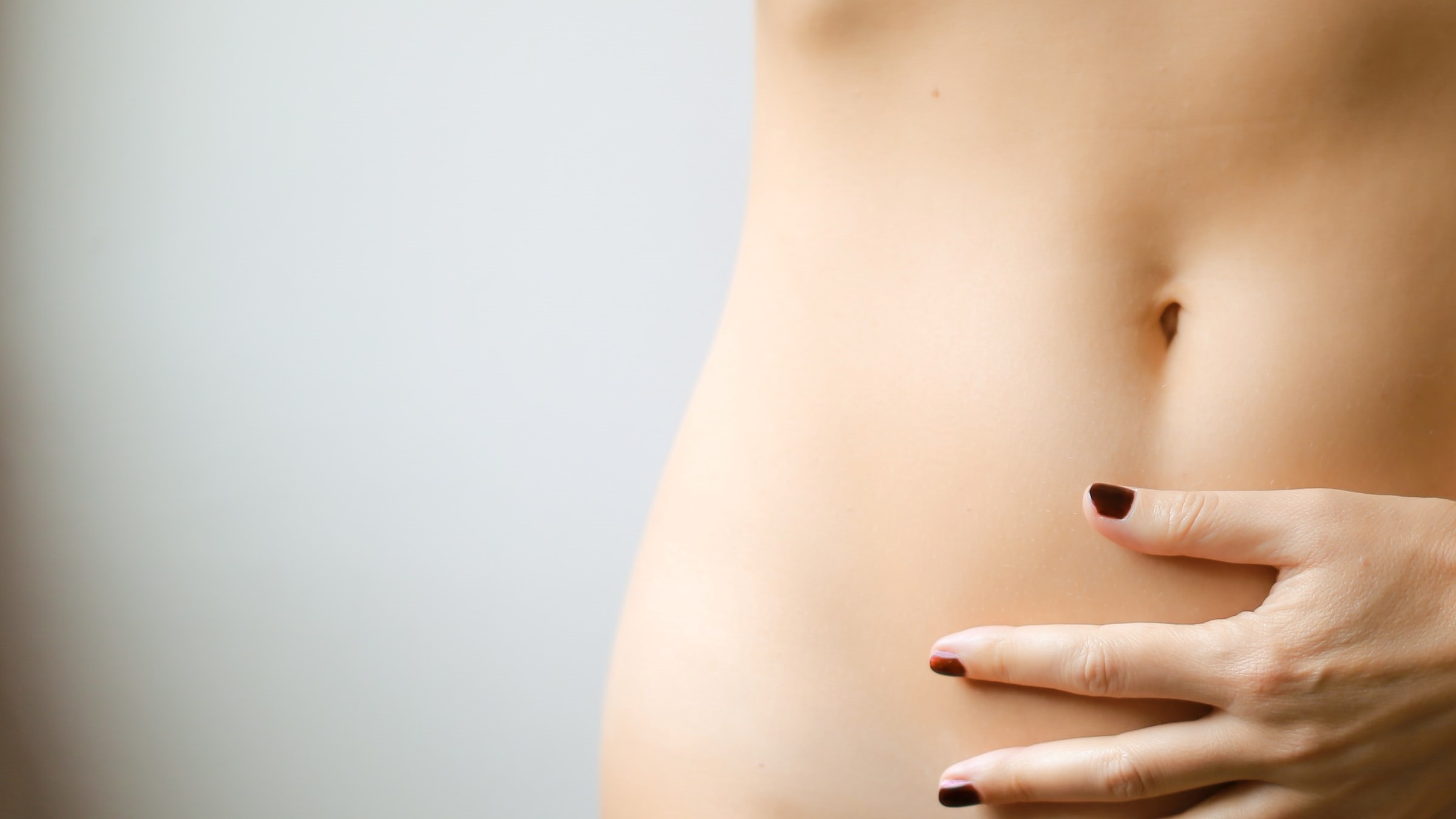
Understanding your hormones
Having established the four phases of the menstrual cycle, there’s been mention of two predominant reproductive hormones — oestrogen and progesterone — but what do they actually do? It’s important to understand the various effects they can have on us throughout the cycle; as hormone levels fluctuate, you may notice changes in your energy levels and body temperature, your ability to focus and motivate yourself, and your overall performance level. Or, you may notice nothing at all. We’ll keep saying it: everybody’s different.
Oestrogen
Oestrogen is one of the two main female reproductive hormones, produced by the endocrine system and distributed throughout the body via the bloodstream. According to endocrinologist Dr Nicky Keay, in addition to the role it plays in reproduction, oestrogen is needed to maintain healthy bones and muscles, as well as cognitive function.
“Oestrogen is a neurotransmitter,” she says, “which stimulates serotonin [the ‘happy hormone’] production. It also contributes to neuromuscular control.”
Oestrogen levels increase after the menstrual phase and continue to rise throughout the follicular phase until ovulation occurs. Its positive effect on cognitive function means that some people find the first half of their cycle, particularly the follicular phase, to be the optimal time of the month for planning and carrying out tasks that require a lot of focus. They may also notice a surge in energy and find this the perfect time to do high-intensity and strength training.
Progesterone
Progesterone is the other main female hormone, and it is secreted by the corpus luteum (formed by the follicle after ovulation) during the second half of the menstrual cycle. Its primary purpose is to ready the body for pregnancy, causing the uterus lining to thicken.
Dr Keay stresses that it’s impossible to pinpoint where the problem areas are likely to arise during the menstrual cycle because it varies so much from person to person. “If you’re going to have problems in your cycle it could be at any time; during the bleed or ovulation, or slightly more commonly during the luteal phase”, she explains. “This can be due to the rise in body temperature, and some people may be too hot to get a good night’s sleep.”
That’s right, progesterone also causes a rise in basal temperature, which can be noticeable for some people who may find hard efforts in hotter climates much more of a struggle than usual, whereas others may not notice any change at all. “Some women, during the luteal phase, if they’ve ovulated, might see an increase in their metabolic rate,” Dr Keay continues. “They’ll need to keep cool and have consistent nutrition. Progesterone is a catabolic hormone [which means it breaks down complex molecules like proteins and lipids, releasing energy in the form of heat] so they should increase their protein intake. But of course, you need to know if your progesterone levels are high in the first place.”
High progesterone levels can also be a contributing factor to PMS symptoms, like breast tenderness, bloating and mood swings. Once menstruation starts, progesterone levels plummet. Some people who experience terrible PMS can feel a surge of relief at this point, whereas others may continue to suffer from cramping.
Knowledge is power
Taking the time to get to know your unique menstrual cycle, and forming an awareness of how your body feels during each phase, can help you to plan your training or schedule races around the time of the month that you know you’ll have the most energy, as well as being able to plan some rest and recovery for the times when you’ll need it most.
It’s not just about planning around your hormones, but also making sure your body has everything it needs. As Dr Keay rightly asks, “just as you would make sure your bike is serviced and roadworthy, why wouldn’t you do the same for your hormones?” It’s relatively new, but more and more research is being carried out these days to find out how we can best look after our hormones. The hardest part, however, can be figuring out exactly which hormones are at work at any given time.
“I see a lot of athletes at all levels,” Dr Keay says. “Some of them have run into problems or feel they’re not performing at one hundred per cent, so we discuss their nutrition and training and carry out blood tests to establish objective markers. The best way to measure hormones is with a blood test.”
By testing the blood for ‘biomarkers’ at specific stages of the cycle, Dr Keay is able to work with athletes to pinpoint the average length of each phase and the levels of each hormone and use this information to help explain any symptoms or struggles that recur in each cycle.
Dr Keay stresses that not everyone will encounter symptoms from their hormonal fluctuations, and if no symptoms are recorded then no advice is necessarily needed. However, if you struggle with significant ebbing and flowing of energy levels, ability to focus, and pain or discomfort, then pinpointing exactly what’s happening in your body at a given time through biomarker testing could be invaluable.
Keeping track of your cycle
If blood testing isn’t something you wish to do, there are other ways to track your cycle so you can spot patterns in the way you feel each month, and potentially work out what could be causing them.
The simplest (and cheapest) way to track your cycle is to keep a journal. On day one of your bleed, start recording how you feel each day until you bleed again. Mark every day of your actual period, then keep tabs on everything you notice about yourself, from what your energy levels are like, how well you’re able to concentrate on work that day, how hungry you are, how your moods change, any pain or discomfort you feel, and anything else that seems noteworthy. It would also be useful to track your daily temperature (taken first thing in the morning before you do anything else), and any changes to vaginal secretions (which can help you pinpoint when ovulation is approaching). Using your ovulation and periods as markers will help you establish when you’re in your follicular and luteal phases.
After several months of doing this, you should be able to see patterns which not only make it easier to estimate when you’re shifting between phases but also how they impact you. You may find that you have more energy during the first half of your cycle, and less so as you approach your menstrual phase. Or again, you may notice nothing at all.
Whether you suffer from severe period pains or feel nothing at all outside of your bleed week, there’s no need to be disheartened. “As long as you’re having periods, your experience of them, whatever it is, is absolutely fine,” says Dr Keay.
If you don’t think you’ll stick to the daily journaling and prefer to let technology do the heavy lifting, there are several apps you can use to track your cycle. Fertility tracking apps like Natural Cycles and Clue use algorithms that rely on daily basal temperature readings to work out when you’re ovulating (and therefore fertile). Other apps like Wild.AI and FitrWoman only require you to log in when your period occurs, along with any symptoms you experience. While the former two can double up as a contraceptive method, the latter two are more suited to helping you train in a way that takes your cycle into account.
Biohacking and working with your body
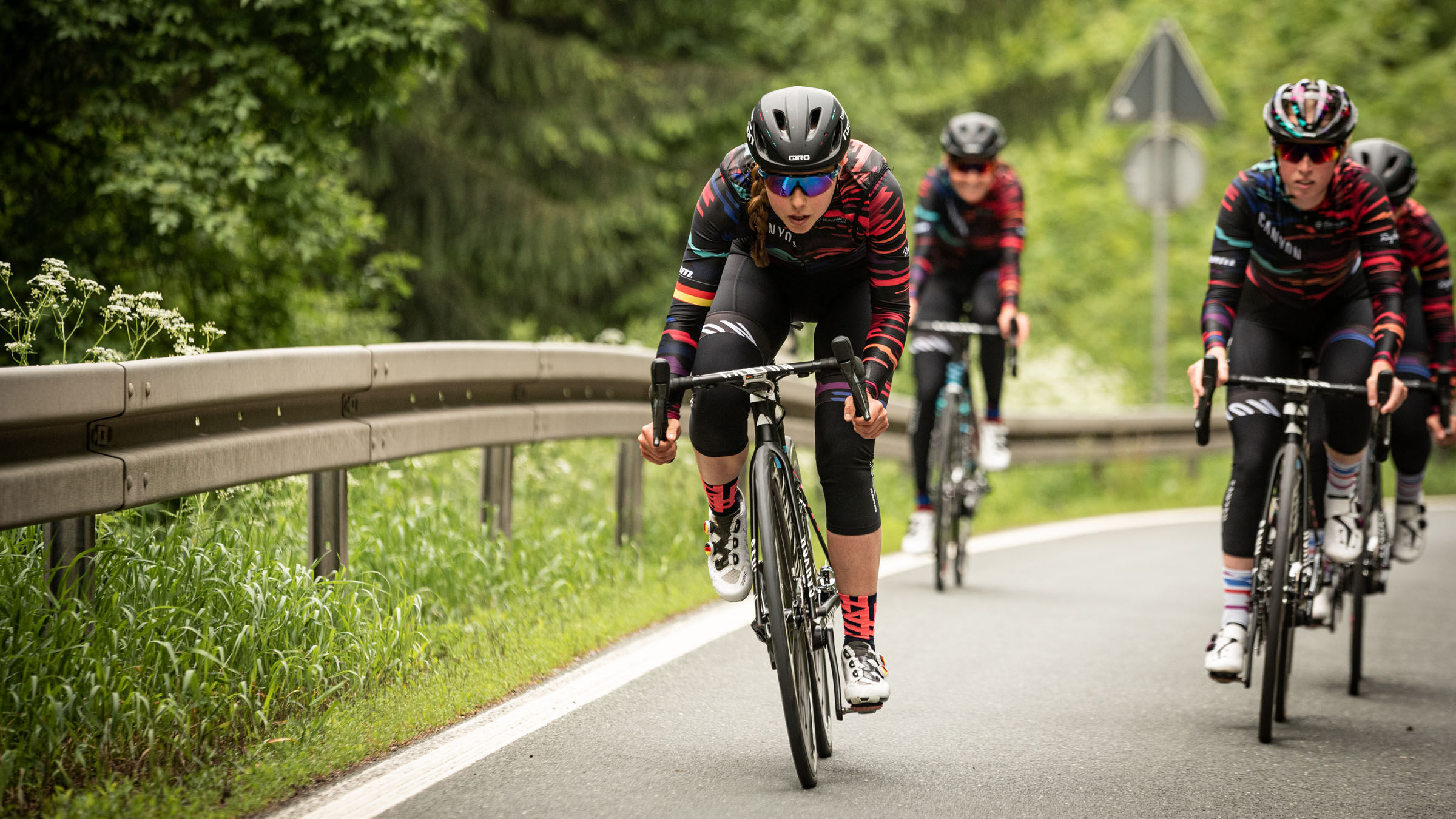
You may or may not have heard the term ‘biohacking’ before in relation to the menstrual cycle. There’s been a recent wave of research carried out by various individuals (some are scientists, others are not), and the resulting books can offer an in-depth insight into the cycle, along with tips on how to use this knowledge to ‘bio-hack’ your way to peak performance, working with your hormones rather than against them.
Coaching around the menstrual cycle
Among these books is ROAR: How to Match Your Food and Fitness to Your Unique Female Physiology for Optimum Performance, Great Health, and a Strong, Lean Body for Life, by Dr Stacy Sims. In this book, Sims outlines a comprehensive nutrition and training guide based on female physiology. However, it’s worth bearing in mind that it’s now seven years old and some of the advice is a bit dated. Instead, Sims runs coaching courses for athletes and coaches alike to delve further into the science and stay up to date with current research.
Ultra racer and coach Jasmijn Muller took both of Sims’ courses when they first launched and provides bespoke coaching that, for her female clients, is adapted to work alongside their menstrual cycle.
“All the generic advice that women have been given for decades just doesn’t add up,” she says. “You have to adapt to the individual.”
Currently working with around 20 female clients of varying ages (with some going through menopause), Jasmijn helps her clients to listen to their bodies, log symptoms if and when they have them and then works with them to tailor their workouts accordingly.
“I do see a really big split in that first week [of the menstrual cycle]” she explains. ”A lot of my clients, for the first two or three days of their period, feel a perception of having impaired performance, which quite often is related to pain. They’re not able to do HIIT or heavy weights, whereas for others it’s like as soon as the bleeding starts, all the energy floods in and they can hit it really hard. During the follicular phase, pretty much [all of my clients are] on fire, moods are up, they’re willing to try new things, and the serotonin is definitely starting to flow.”
Rachael Wight, a mountain biking coach for ProRide, also takes her clients’ menstrual cycles into account when tailoring their training. "I talk about this all the time with clients," she says, "and also those who are going through or nearing menopause. Everyone has such different experiences."
Rachael uses a period tracking app to keep tabs on how her own body and physical abilities ebb and flow throughout her cycle. "I know I'm super strong aerobically and well coordinated just before my period, then as soon as it starts I feel like I'm clumsy and can't balance well on my bike. [At this time] I'm erratic and also way more scared than I usually am. Then at the end of my period, [I start] getting back to normal."
She continues, "I’m definitely more switched on to this than many of my clients, but many have thought about it in some way. I encourage them to note down any feelings, emotions, riding issues or successes each month to see if there is a regular occurrence alongside hormones."
"I think women especially give themselves a hard time about not being confident (or brave) enough with their riding when actually we [can all be] hampered or hindered by hormones. But on the flip side, we can also harness them and make the most of our strong days."
Racing around the menstrual cycle
Retired pro cyclist and Olympian Nikki Brammeier, who also coaches now, speaks very openly on her social media about her experience of racing at peak performance while struggling with menstrual symptoms.
“I found that having an understanding of those fluctuations throughout [my cycle] allowed me to work with my body and manage my energy better,” she told us. “I could target races in my follicular phase when I knew my physiology was on my side. During the luteal phase when I wasn’t feeling my best, I would take it much steadier with the intensity of sessions, and if I did have a key race in that time then I could accept that although I might not feel my best, I could still give my best. It allowed me to be kinder to myself and not beat myself up knowing what was going on with those hormones.”
“I got to the point in my cycling career where I could sync my workouts alongside my menstrual cycle. I understood what was happening with my hormones at different times within the month. The fundamentals of training still applied, but the power that came from understanding my body gave me confidence, rather than working against my body, I worked with it.”
Looking back over her own career as an ultra racer, Jasmijn Muller also recognises the impact her cycle may have had on her performance, and she continues to use this knowledge to finetune her own training, as well as that of her clients.
“For me, usually after the first two days of my period I feel fine, and I don't feel like my performance is impaired,” she explains. “It’s the last few days before the period where I feel the most lethargic, and I find temperature management during the luteal phase very challenging. Especially over a long, continuous effort in the heat; if you can’t cool yourself down, then you can’t put power out anymore.”
“I did have races that overlapped with my period, and when I look back it’s hard to say if that was the reason I didn’t do as well as I could have. There are always other factors that contribute to your performance, like if you work long hours around your racing, or if you’re not getting enough sleep.”
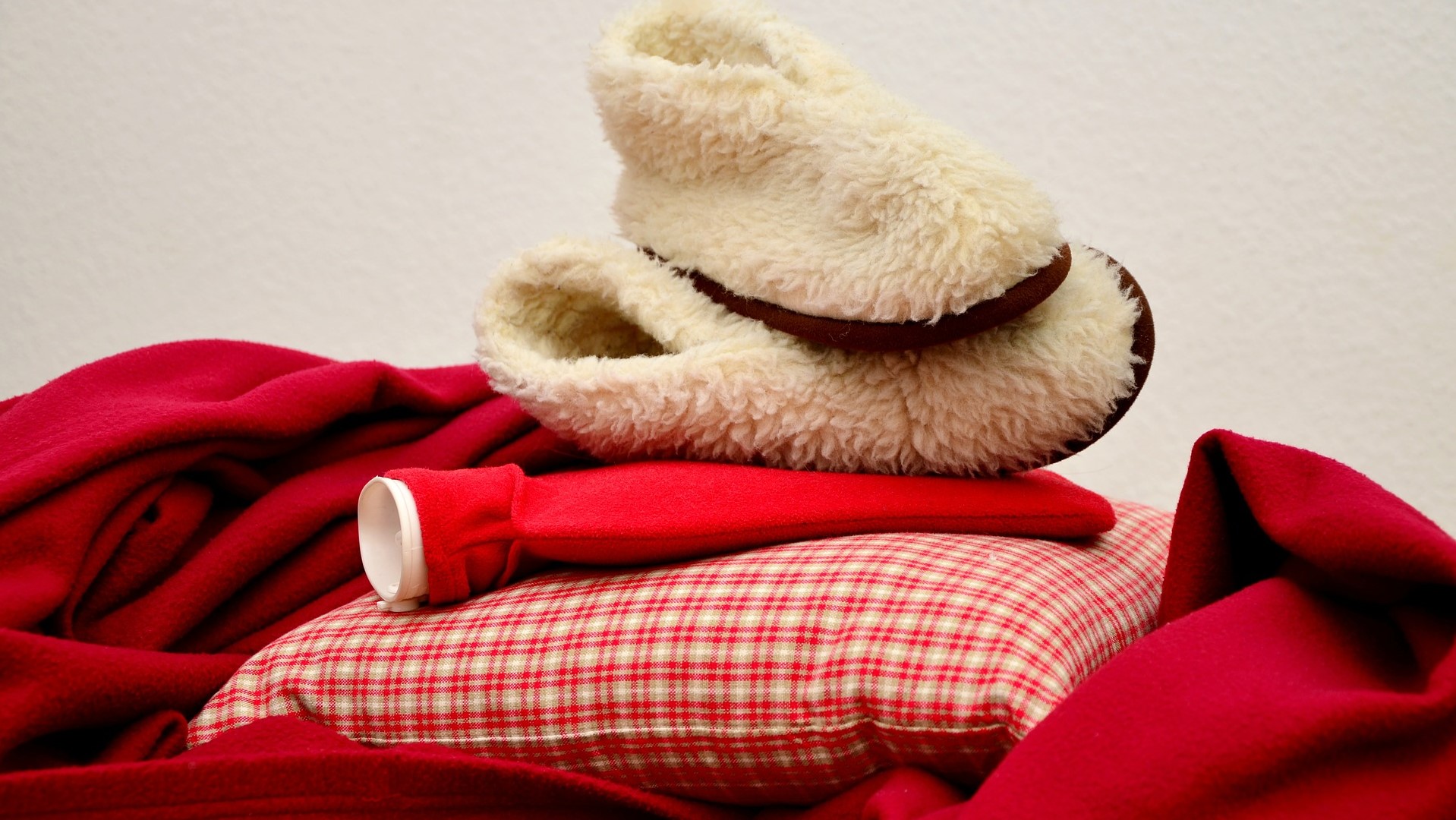
Troubleshooting: common symptoms and missing periods
Not everyone will suffer during their menstrual cycle, but plenty of people do. If you experience any of these symptoms regularly during your cycle, you’re not alone:
- Cramps
- Headaches
- Backache
- Breast tenderness
- Bloating
- Skin breakouts
- Joint pain
- Constipation or diarrhoea
- PMS (characterised by any of the above, and/or mood swings, light sensitivity, noise sensitivity, depression, anxiety, fatigue)
If this is you, all is not lost. In fact, there could be some good news: “Where I’ve been seeing the biggest gains in really sticking to these patterns [of adapting training to the menstrual cycle] is in people who have the most pronounced hormonal symptoms,” says Muller. “For those with PMS and PMDD [premenstrual dysphoric disorder], the adaptations can really work, but it’s a journey. In general, I believe that you should be able to do any exercise at any time during your menstrual cycle, but there are certain times in the month that are more conducive, like doing strength training in the first half while progesterone is low, and you have a better anabolic response.”
Dr Keay advises gentle exercise to ease cramps: “I used to find swimming to help. Something to elongate and release the tension in the pelvic muscles. Low-intensity exercise is key, and keep on top of your hydration and iron intake.”
PMS Protocols
According to Dr Stacy Sims, as outlined in ROAR, there are certain 'protocols' that you can put in place to mitigate severe PMS symptoms (if you already suffer from them). This involves taking the following supplements every night for the seven days prior to your period starting:
- 250mg magnesium
- 45mg zinc
- 80mg aspirin (baby aspirin)
- 1g omega-3 fatty acids (flaxseed or fish oil)
Jasmijn has advised some of her clients who suffer from PMS to try them and has seen positive results. “Those who have implemented PMS protocols in the week leading up to their period, tend to have a better first week [of their menstrual cycle]”, she explains. However, she acknowledges that this isn’t a silver bullet, and continues: “but for some, I do often still finetune [their programme] with slightly less demanding sessions, or more focus on recovery [when needed].”
PCOS and Endometriosis
Polycystic ovary syndrome (PCOS) and Endometriosis are both endocrine disorders that affect the functioning of the ovaries. PCOS can cause irregularities in the menstrual cycle, while endometriosis can cause serious discomfort. For both conditions, it’s been found to be possible to alleviate some of the symptoms with gentle exercise.
“For people with endometriosis, ovulation can be a very difficult time, as well as the period,” explains Jasmijn, who works with clients suffering from the condition. “Ironically doing stability and abs work [like yoga and pilates] can help with pain and inflammation. Reducing inflammatory foods [like refined sugar, gluten, trans fat, red meat and caffeine] can also help.”
She continues: “Tracking is the number one thing: if you don’t track, you don’t know, and a lot of women are unaware of the timing of their ovulation. Seeing when these things happen, and how you react to them, can really help with finetuning your workouts, and that’s quite key for people with endometriosis. Moderate exercise can actually give some relief, but the challenge can be getting on the bike in the first place. Usually, after day three of the period, inflammation caused by endometriosis starts to slow down.”
Despite the pain that can come with it, endometriosis doesn’t have to be a deal-breaker. “Put the mitigation in. Using exercise and nutrition to mitigate the inflammation is key,” says Jasmijn.
Missing periods, or relative energy deficiency in sport (RED-S)
At the other end of the spectrum, it’s common for elite female athletes to stop having their periods altogether. Often referred to as RED-S, Dr Keay describes this phenomenon as the “negative effect of not having these hormones around.”
“For some cyclists, it’s unintentional, where they’re out for hours and it’s difficult to keep on top of energy demands before, during, and afterwards. If they’re not fuelling sufficiently, their body will try to save energy and be as economical as possible.” The menstrual cycle requires a lot of energy, and an under-fuelled body is unable to carry a pregnancy to term, so it’s one of the first things to go.
At the other end of the spectrum, it’s common for elite female athletes to stop having their periods altogether. Often referred to as RED-S, Dr Ke describes this phenomenon as the “negative effect of not having these hormones around.” t that I wasn’t producing the right hormones to ovulate, which meant no egg would be released, no shedding of my uterus would happen, and therefore, no period. I gave myself more days off to recover between sessions, I also had to begin fuelling my workouts better to give my body what it needed to train and race efficiently. I could still train hard, but the key to me adapting to sessions was to rest harder.”
RED-S is a very complex topic that’s far too big for us to cover in full here. If it’s something you’re concerned about, or interested in learning more about, check out Cycling Weekly’s fascinating article about cycling’s hidden under-fuelling epidemic.
The key takeaway, for now, is, having a period is crucial to your health, and regardless of how hard you train, you should still be having periods. If overtraining and under-fuelling have stopped you from having them, seek advice from a medical professional, and ignore the people who dismiss it as normal.
The best products for cycling on your period
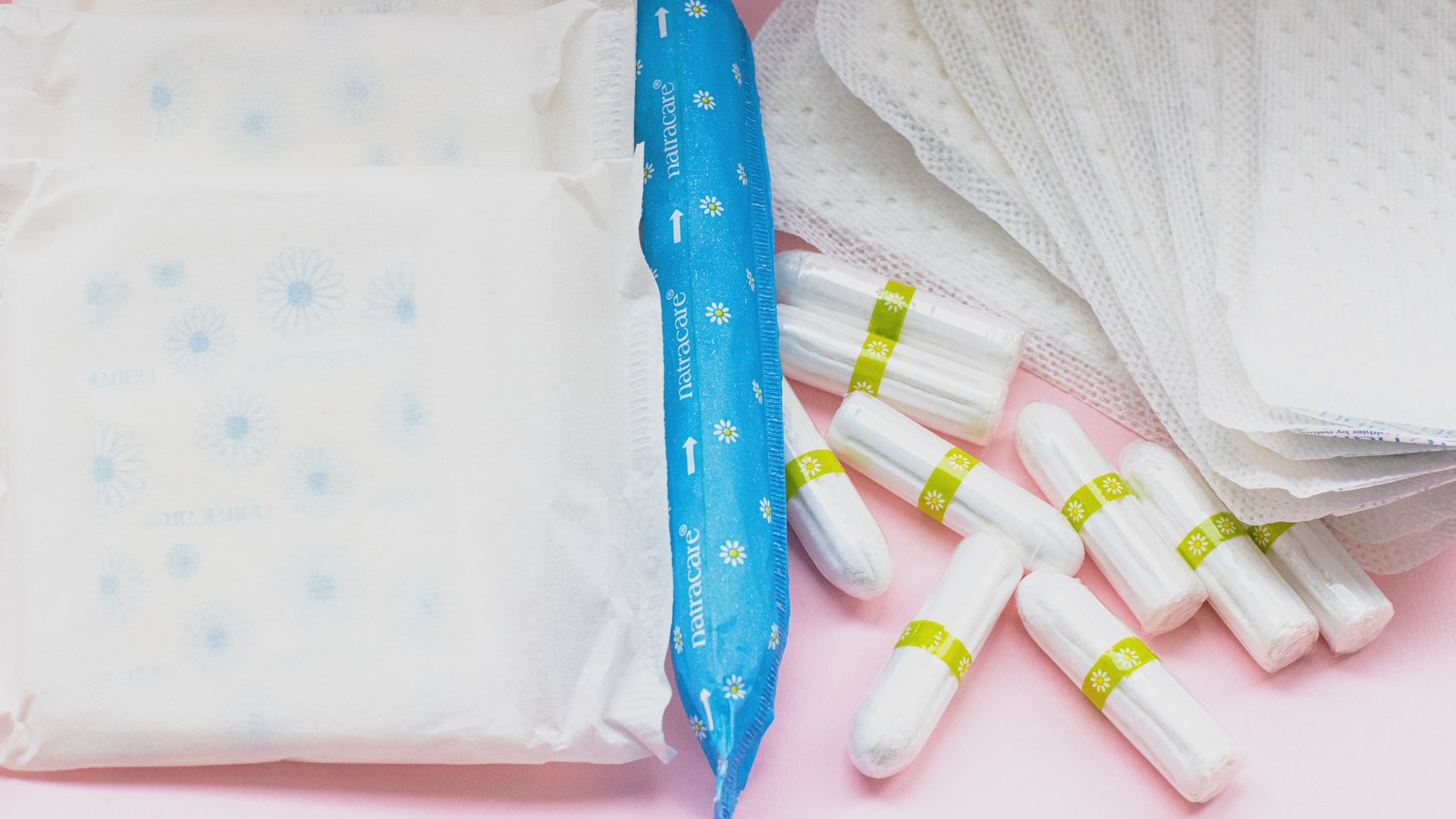
With all of this information overload, well done if you made it this far. By now you should have a good idea of what you need to do to make your menstrual cycle play nicely with your cycling regime (if it’s not already), and all that’s left is to tackle the actual practicalities of cycling on your period. If you’re not sure which way to go, here’s our pick of the best period products for cycling with a chamois.
Menstrual cup
Of all the period products out there, the menstrual cup is hands down our favourite for cycling. It can be left in for up to eight hours and doesn’t have any protruding parts that could interfere with or cause unwanted friction. Plus, with it being washable and reusable, it’s better for the environment, just be sure to plan ahead and include a stop on your ride where you can use the necessary facilities.
Tampons
If you prefer the good old-fashioned tampon, then these can also be great for cycling. However, we cannot stress enough that you should be careful about where you leave the string. The last thing you want is for the string to rub and cause a saddle sore (and this has happened to the best of us), so consider tucking it up inside. If you end up changing it while you’re out riding, be sure to take your waste with you if you can’t dispose of it.
Sanitary towels
If you prefer not to insert anything, a sanitary towel is a good way to go, and it can be possible to adhere one to your chamois if needed. However, we wouldn’t recommend this for a long ride, as it obstructs the breathability of your chamois, and creates a build-up of heat, sweat and bacteria.
Free bleeding
Of course, there’s nothing to say that you have to use any products at all. Plenty of people are comfortable with a free bleed, particularly if their period is very light. When you consider the fact that washing machines can handle reusable cloth nappies and everything that those get covered in, cleaning out your chamois isn’t that big of a deal.
This was a pretty comprehensive guide, and while there’s plenty of information that will help a lot of people, it’s up to you to know what’s right for your body. If you’re completely new to all this, definitely consider tracking your cycle for a few months, and if you do struggle with any menstrual or PMS symptoms, we hope this guide will help.
Mildred joined as Reviews Writer for Cyclingnews and BikePerfect in December 2020. She loves all forms of cycling from long-distance audax to daily errand-running by bike, and does almost everything on two wheels, including moving house, and started out her cycling career working in a bike shop. For the past five years she's volunteered at The Bristol Bike Project as a mechanic and session coordinator, and now sits on its board of directors.
Since then she's gone on to write for a multitude of cycling publications, including Bikeradar, Cycling Plus, Singletrack, Red Bull, Cycling UK and Total Women's Cycling. She's dedicated to providing more coverage of women's specific cycling tech, elevating under-represented voices in the sport, and making cycling more accessible overall.
Height: 156cm (5'2")
Weight: 75kg
Rides: Stayer Groadinger UG, Triban RC520 Women's Disc, Genesis Flyer, Marin Larkspur, Cotic BFe 26, Clandestine custom bike
